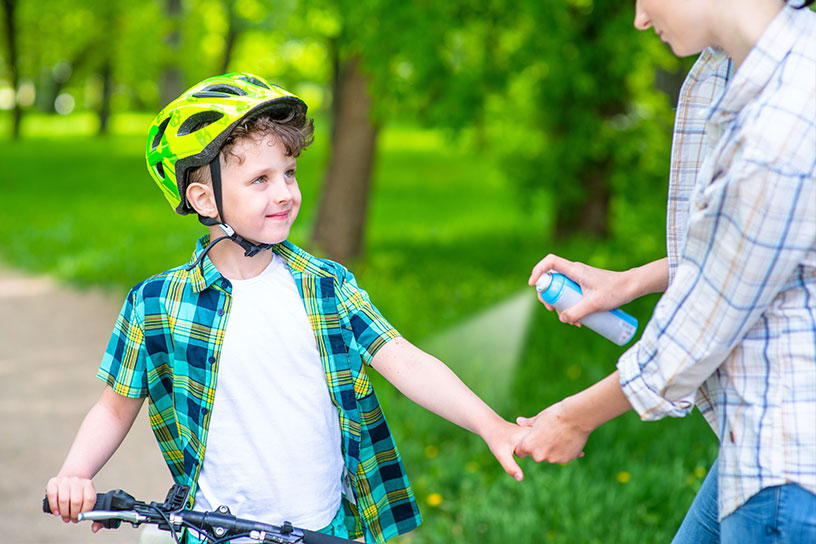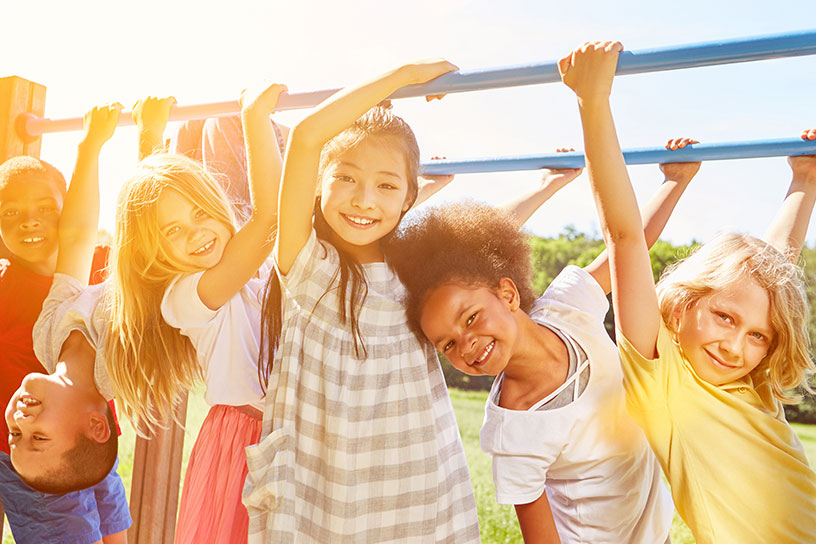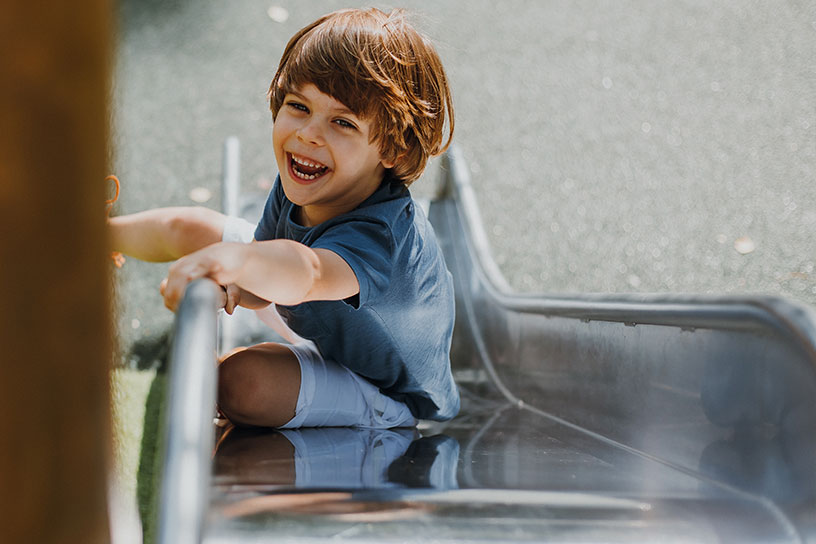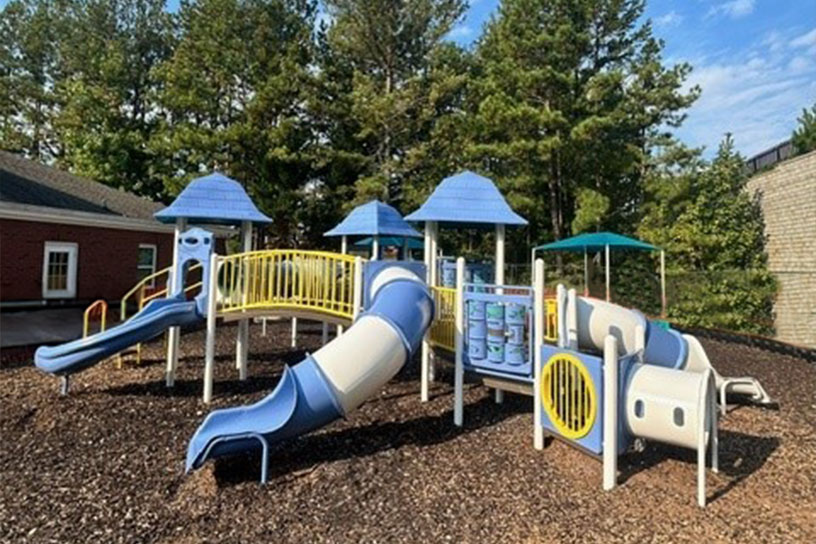If you own or operate an older playground, you may wonder if your equipment is safe for the children who use it. The truth is, many old playgrounds feature dangerous materials and surfaces. Today we’re looking at five common outdated features and the safe playground materials they should be replaced with.
1. Wood Mulch
One of the most common hazards we see is the absence of safe playground surfaces. Unfortunately, many older playgrounds still feature traditional wood mulch or grass. While these options are low-cost (or no-cost) and readily available, they do not provide appropriate impact absorption and can lead to serious injuries on the playground.
Wood Mulch Alternatives
If you’re looking to replace your wood mulch or grass with a safer playground surface, you’ll find dozens of options on the market to choose from. Instead of wood mulch, try engineered wood fiber (EWF), rubber mulch, or loose-fill rubber.
If you love the look of grass, explore synthetic turf options that are specifically for playgrounds and have shock-absorbing properties. For a full list of safe playground surfacing options, check out our blog!

2. Metal Slides
Metal slides are extremely common on older playgrounds because they are affordable and easy to produce. However, they present a variety of health and safety risks. First, unfinished metal is not a safe playground material, as metal slides can be a serious burn hazard in hot weather. While some parents and teachers think to test the temperature of the slide before use, not all do.
Second, without frequent inspection, sharp edges can form and create further dangers for children. If you have a metal slide, it must be inspected carefully, and any sharp edges or missing pieces should be grounds for temporary closure of your playground equipment.
Metal Slide Alternatives
If you’re looking to update your outdated metal slide, plastic is a popular and safe playground material to consider. Plastic slides are relatively low-cost, available through nearly every playground equipment manufacturer, and far cooler to the touch than their metal counterparts.
3. Rope Playground Features
Ropes and rope swings are a common playground feature because of their affordability and versatility. However, they can also pose significant dangers to children at play. Rope burn, entanglement, and strangulation are three of the biggest concerns to be aware of if you manage an outdated playground with rope elements.
Rope Alternatives & Modifications
Not all ropes on the playground are unsafe – it’s all about how they are selected and installed. Rope materials should always be purchased from a playground manufacturer – never the hardware store. This ensures that the materials are as safe as possible and that they were designed to be used for playgrounds, which eliminates a number of safety concerns.
You’ll also want to pay attention to how you replace and install your rope elements. Always avoid closed loops that can become strangulation hazards. And, make sure that ropes are strung tightly enough that they cannot twist and create entanglement hazards.
4. Elevated Playground Platforms
Unfortunately, many playgrounds built in the 1980s and 1990s (before modern safety standards were developed)are still in operation today. Not only do they not utilize safe playground materials, but they often weren’t designed with safety in mind from a design and layout perspective.
For example, many playground platforms may be higher than recommended, presenting unnecessary hazards for falls. Older playgrounds are also less likely to have appropriate railings and other protective measures. While elevated platforms help children build confidence and motor skills, safety must always come first.
Platform Modifications
If your playground platforms are in disrepair, it may be best to remove them and install new platforms at a safer height with appropriate guardrails. However, if your equipment is in good shape, some new guardrails may be all you need. You can buy railings in many sizes to fit your existing equipment and keep children safe from unnecessary fall risks.

5. Multiple Occupancy Equipment
This term may sound complicated, but it simply refers to playground features where children can use the same piece of equipment at the same time, like gliders and teeter-totters. The main risk is that children swinging may hit other children at play if there is not sufficient space around the feature.
Glider and Teeter Totter Safety & Alternatives
When it comes to safety on multiple occupant playground features, consider your equipment. Does it have individual seating for each child? Is there a clear limit of how many children can play at one time? Does it have adequate space around it that does not overlap with walkways where other children at play pass through? If so, your equipment may be good to go.
However, if your feature has one large seat that many children can fit into, they may be at risk of injury due to weight and size differences. And, if there isn’t sufficient space around your equipment for it to be in motion, you may want to consider an alternate piece of equipment made with safe playground materials.





